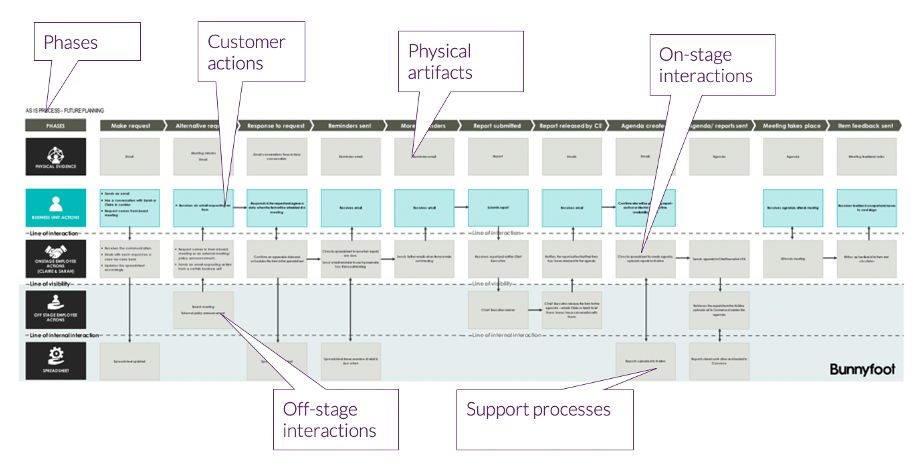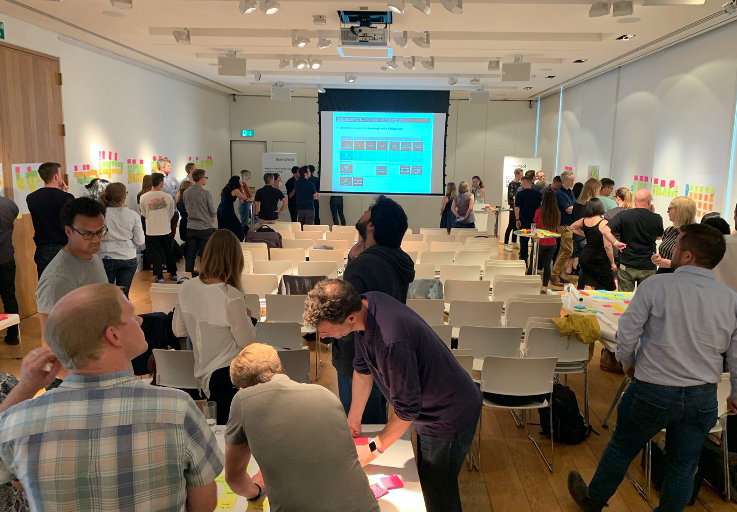Design Thinking and/or Service Design tools and methods are all high on the agenda for many companies, especially in this time of uncertainty we live in when we have to re-think many of our services and how our customers/users interact with them.
There is a vast selection of really useful tools that we (Service designers, UX consultants, Design researchers, anthropologists, designers, customer insight specialists, strategists and the list goes on) have at our disposal. But which one is the most important? Which one would I choose if I could use just one? I would choose the service blueprint without any doubts!
What is a Service Blueprint?
Like an MRI scan, the best diagnostic tool in medicine, producing detailed images and providing different perspectives of an organ, service blueprints map out all a company’s service components digging into the detail and including everyone involved.

In a nutshell, service blueprints plot outs a customer/user journey including all touch points and artefacts, supporting front-end and back-end employees, processes and technology.
Unlike an MRI, service blueprints go beyond the current state and can visualise the future state of the service.

Service Blueprints manifest all these key principles:
- Human centred – user, customer and service providers are the main players on the service blueprint canvas.
- Collaborative – to produce a service blueprint you need to work with different teams and coordinate or even align across departments
- Sequential – it follows the journey that a real customer/user goes through often including pre-during-post service periods
- Real – service blueprints are always rooted in reality using evidence-based stories
- Iterative – service blueprints can start with assumptions which are validated with research, they are then modified and transition into a future ideal scenario format
- Holistic – they provide a bird’s-eye view over a particular service which no other tool does better
What makes it a great operational tool for teams too:
- Visual and enticing – everyone likes infographics as they are easier than words to comprehend, they encourage people to get into the detail and explore – service blueprints do the same
- Concise – they are to the point and clear
- Cheap to produce – you can use pen and paper or digital, what you need is time and knowledgeable participants moderated by a prepared facilitator
- Multi-purpose – they can be used to; collect all assumptions, visualise research findings, generate ideas for improvement as a brainstorming tool, act as a future-looking tool presenting an idea for a service. Also, throughout the process they are developed by different departments and then used by many going beyond project teams into design departments, customer service teams, sales and marketing as well as on the walls /tables of senior decision makers.
- Comprehensive – they connects dots across teams and departments, on and off-stage processes, employees & end users
- Unifying –many teams and departments have to come together and join their efforts and knowledge to produce a real service blueprint. It helps people from different teams to talk, listen to each other and align their experiences and visions.

You might now wonder where any danger lies? The main thing to watch out for is substituting assumptions, vague ideas, anecdotes and someone’s opinion with real user/staff stories, facts and evidence. You should never treat the first assumption-based round of service blueprinting as a final version. An experienced and trained moderator can help teams to avoid this trap.
Want to learn more?
At Bunnyfoot, we regularly develop and deliver service blueprints for our clients, if you have a Service Design challenge, get in touch, we’d love to help.
We also run a regular training course where you can learn to do it yourself. Join our next Fundamentals of Service Design course.




